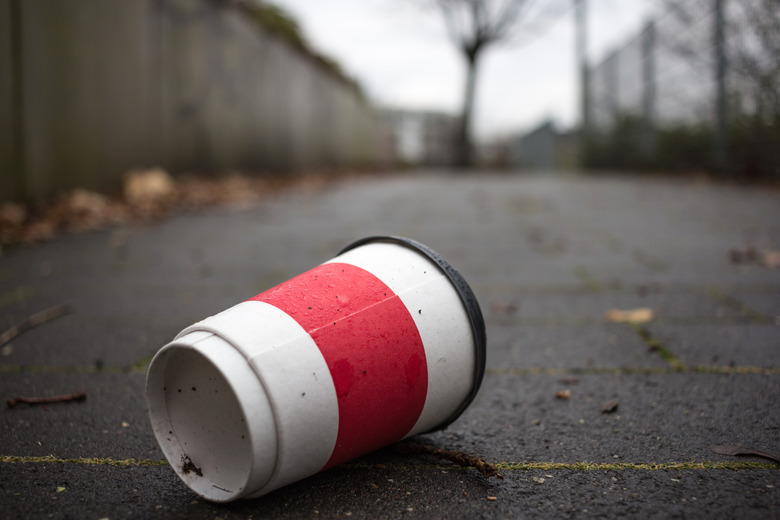The Effects Of Littering On The Environment & Animals
As humans consume natural resources, they, too, create byproducts that enter Earth's varied ecosystems. Plastic waste, water pollution, soil runoff, and jars and bottles make up just a few of the human-made products and byproducts that can harm the Earth and the species that live on it. The damage can be physical — six-pack rings strangling marine life — or chemical — fertilizers causing algal blooms — but in either case, they can cause lasting damage to the flora and fauna of an area.
Plastic Waste
Plastic Waste
Discarding plastic products, including grocery sacks, rapidly fills up landfills and often clog drains. When plastic litter drifts out to sea, animals like turtles or dolphins may ingest the plastic. The plastic creates health problems for the animals including depleting their nutrients and blocking their stomachs and intestines. Animals cannot break down plastic in their digestive system and will usually die from the obstruction. Pieces of plastic can also get tangled around animals' bodies or heads and cause injury or death.
Water Pollution
Water Pollution
Litter in Earth's water supply from consumer and commercial use creates a toxic environment. The water is ingested by deer, fish and a variety of other animals. The toxins may cause blood clotting, seizures or serious medical issues that can kill animals. The toxic water may also kill off surrounding plant life on riverbanks and the bottom of a pond's ecosystem. When humans eat animals that have ingested compromised water supplies, they also can become sick.
Soil Runoff
Soil Runoff
Runoff from litter, polluted water, gasoline and consumer waste can infiltrate the soil. The soil absorbs the toxins litter creates and affects plants and crops. The agriculture is often compromised and fails to thrive. Animals then eat those crops or worms that live in the soil and may become sick. Humans who eat either the crops or the animals feeding on the infected agriculture can also become ill.
Jars and Bottles
Jars and Bottles
Discarded jars and bottles usually do not biodegrade naturally and add to humanity's mounting litter problem. The litter remains in landfills and clogs sewers, streets, rivers and fields. Crabs, birds and small animals may crawl into the bottles looking for food and water and become stuck and slowly die from starvation and illness. The World Wide Fund for Nature reported some 1.5 million tons of plastic waste from the water bottling industry alone.
Cite This Article
MLA
Irving, Catherine. "The Effects Of Littering On The Environment & Animals" sciencing.com, https://www.sciencing.com/effects-littering-environment-animals-8634413/. 17 April 2018.
APA
Irving, Catherine. (2018, April 17). The Effects Of Littering On The Environment & Animals. sciencing.com. Retrieved from https://www.sciencing.com/effects-littering-environment-animals-8634413/
Chicago
Irving, Catherine. The Effects Of Littering On The Environment & Animals last modified August 30, 2022. https://www.sciencing.com/effects-littering-environment-animals-8634413/
